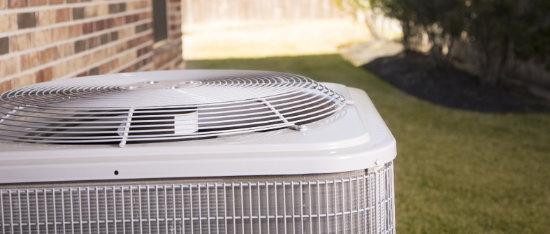Did you know that R-22, also known as HCFC-22 or "Freon," was the most common type of refrigerant used for many decades? Its commercialization first took place in 1936, and by the late 50s, it entered the AC market.
Today, no one is no longer allowed to produce R-22 in the US, following the EPA's updated 2020 Phase-Out. By 2030, there will be a complete ban on the production and import of all HCFCs in the US. New refrigeration and air conditioning equipment must use the R-410A refrigerant.
However, there's another "new kid" in town set to displace R-410A. This time, it's the R-32 refrigerant.
On that note, we came up with this guide to help you prepare for all these refrigerant-related changes. Read on to learn all about R-410A and R-32 and how the latter can be much better.
What Is R-410A?
Unlike R-22, R-410A, also referred to as “Puron,” is a hydrofluorocarbon (HFC) refrigerant. This means that it’s not an ozone-depleting substance.
Most refrigeration and air conditioning systems manufactured by 2015 utilize R-410A. However, some fridge, heat pump, and air conditioning brands used it as early as 2010. Carrier is the most notable, considering that it invented Puron.
Aside from its 0 ozone-depleting potential (ODP), R-410A can also boost equipment efficiency. In this way, researchers say that this refrigerant allows users to save on energy.
Is R-410A Refrigerant Here to Stay?
No. Like with R-22, we will all eventually say goodbye to R-410A.
For starters, R-410A can still contribute to climate change. Even if it doesn't hurt the ozone layer, it still has a global warming potential (GWP).
Some states are also pushing for refrigerants that are "eco-friendlier" than R-410A. A perfect example is the State of California.
The Golden State has proposed limiting all new stationary ACs to have a GWP of 750 or less. This proposal is set to take effect by January 01, 2023.
New Jersey, Vermont, and Washington also have adopted HFC regulations. Eight others, including CO, CT, DE, HI, MA, MD, NY, and OR, are also developing state regulations.
Because of this, new-generation refrigerants are already in circulation. One of these is R-32, also known as "difluoromethane."
What Is R-32?
Like R-410A, R-32 is also a type of hydrofluorocarbon refrigerant. Another similarity is that R-32 also has 0 ODP, so it doesn't deplete the ozone layer.
One of the primary differences between the two is their global warming potential. GWP is a measurement of the global warming effects of various gases. It attempts to quantify just how big of an impact a gas can have on global warming.
For example, carbon dioxide has a GWP value of 1. Note too, that CO2 is the reference gas for GWP. The higher another gas' GWP value, the greater its warming effect compared to CO2.
With that said, scientists say that the R-410A refrigerant has a GWP of 2,088. This means that it has an Earth-warming effect of 2,088 times more than CO2.
By contrast, R-32 has a GWP value of 675. That's still high, but that also means its GWP is only a third of R-410A. Therefore, R-32 is a greener, eco-friendlier option than R410-A.
As such, some HVAC makers, like Daikin Industries, pushed to have R-410A replaced with R-32. In fact, Daikin was the first to use R-32 in air conditioners. You’ll still find Daikin R-410A units, but many now run on R-32.
Other brands that have followed suit are Goodman Amana, Mitsubishi, and Panasonic.
Higher Volumetric Cooling Capacity
Volumetric cooling capacity is the amount of heat a refrigerant can absorb from the air. Compared to R-22, R-410A has a higher capacity. R-410A's thermal exchange properties also best those of the R-22.
Because of this, R-410A has a higher Coefficient of Performance (COP) rating. COP, in turn, is a measure of the efficiency of refrigeration, heat pumps, and air conditioners. The higher the COP, the more efficient the system is.
Experts say that the COP of R-410A is between 5% to 6% higher than R-22.
However, studies showed that R-32 is even more efficient than R-410A. For starters, it operates at a higher critical temperature than R-410A.
Moreover, researchers found that R-32 can have a capacity that's at least 10% higher than R-410A. They also noted that R-32 could have a COP that's at least 9% higher than R-410A.
Ease of Conversion
Fortunately, making the switch from R-410A to R-32 won't be that heavy on your pockets. That's because R-32 is compatible with most units that use R-410A. This means that you may be able to drop R-32 on the same air conditioning line sets that run R-410A.
Before you swap R-410A for R-32, though, it's best to have a licensed HVAC pro examine your existing unit. This helps ensure that your current refrigerant lines are really compatible with R-32. The technician must also clean the lines and ensure that they're leak-free.
If you like doing DIY diagnostics and repairs, know that you can also use many of the same tools for R-410A when you go R-32. Some of these HVAC tools include vacuum pumps, vacuum pump adapters, and charge hoses.
Is There Any Drawback to Using R-32?
R-32 is a mildly flammable gas that belongs to the A2L class of refrigerants. As an A2L gas, R-32 is less flammable than A2 and A3 (such as propane or butane) refrigerants. It also has a slower flame propagation or burning velocity than A2 and A3 refrigerants.
Also, keep in mind that R-32, as a chemical, can still be toxic. However, it has a lower toxicity level compared to A2 and A3 refrigerants.
So long as handled with proper care and attention, R-32 should be safe for use.
Make the Switch to A Greener, Higher-Performing Refrigerant
There you have it, your ultimate guide to R-410A and R-32. Now, you know how these two differ and that R-32 can be a greener, more eco-conscious option. It's also more efficient, so that should be a good incentive for you to consider switching.
Plus, your existing HVAC system may already be compatible with R-32. If it is, then you may only have to swap out the refrigerant itself.
Need more help in replacing outdated HVAC components with higher-efficiency ones? Then know that Technical Hot & Cold has your back. Send us an email or ring us up, and we'll be happy to answer all your heating and cooling questions!
About the Author

James Clark is the HVAC Controls Specialist and Ecommerce Manager for Technical Hot & Cold. He has been with the company since 2014 and enjoys helping homeowners save money by providing help articles that walk them through various DIY HVAC repairs. In his spare time, he's playing music with his children and spending too much time working on his lawn.

